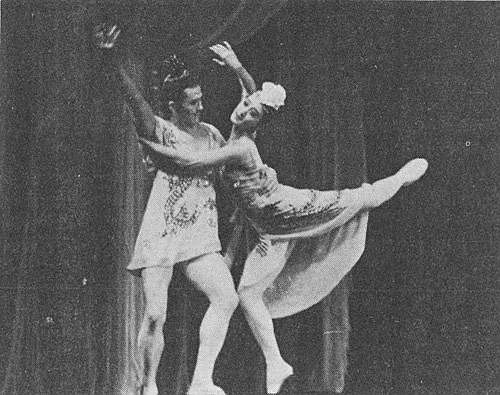|
 |
|
(XU XIANGJUN) |
A large blood-coloured robe that drapes half the stage confronts the audience as imperial concubine Yang Yuhuan ascends the execution platform....
Yang Yuhuan, says the subtle ballet's message, is perceived as demonic spirits. In good times she is simply a plaything, but after conditions erode she is left holding the responsibility for everything.
It is the success of getting this message across that Imperial Concubine Yang is now being described as the best ballet that China has produced since the "cultural revolution" (1966-76) decapitated the arts.
Imperial Concubine Yang bases itself on the real story of Yang Yuhuan who had the mixed fortune of being the most favoured concubine of Emperor Xuan Zong of the Tang Dynasty (618-907).
Yang enjoyed an extravagant and honourable life during her early years. However, as the declining dynasty was enveloped in rebellion, she was brought to bear the blame for the dynasty's decline.
In the opening scene the young girl, the later heroine, with all her tenderness and goodness reflected in her physical beauty is displayed to us while she is taking a bath.
We delight with her as she is selected to be a royal concubine for the hero-emperor, and they share a passionate love.
Then the second act presents us with a very different picture of Yang. The concubine's inner world is in crisis as the dynasty approaches its destruction.
Within the court, the emperor continues to indulge in merrymaking with the palace girls and concubines, while Yang, like a discarded luggage, is left deserted and lonely.
To console her tortured heart she takes to drink as clouds darken over the Tang age.
In the third act the crisis climaxes. After rebel troops force their way into the capital of Chang'an the palace soldiers pass the blame for their incompetence onto the concubine and force the emperor to have her hanged.
The ballet drama also takes a few bold steps in combining traditional and western ballet. Each of the settings for the three acts has simple well defined features.
In act one there is only a thin gauze curtain for the stage set. With the lower half lit crystalline blue for the merry spring waters of her youth, the colour fades into pink at the upper half of the curtain, representing the tender, yet tragic end to her feminine world.
The entire stage set for act two consists of a pillar and half-exposed beam that indicates the court.
Flooded with red and golden light, an atmosphere of splendour and royalty prevails.
The third act brings us a stage dominated with white, the Chinese colour for death, that is complimented with the blood-coloured robe of the tragic heroine.
The music, by Dong Kui and Huang Duo, both post-graduates of the Central Conservatory of Music, carry refined scores that stand out from most other opera music.
Jiang Weihao, one of the choregaphers, is a common name to many American Chinese ballet lovers. Two years ago, he was invited to the United States to lecture at the Jefferson Dance Department where he directed his students to play The Death of Concubine which won him high praise from the Americans.
The Central Ballet Troupe has a long history of presenting traditional Chinese stories in the form of ballet.
Since 1976, apart from this ballet, they have also performed many other ballets with national subject such as The New Year Sacrifice, Lin Daiyu and Blue Flower. | 